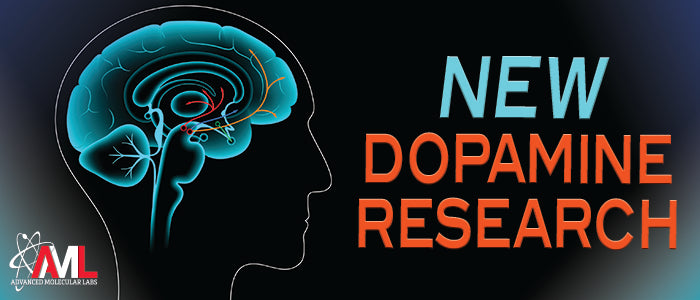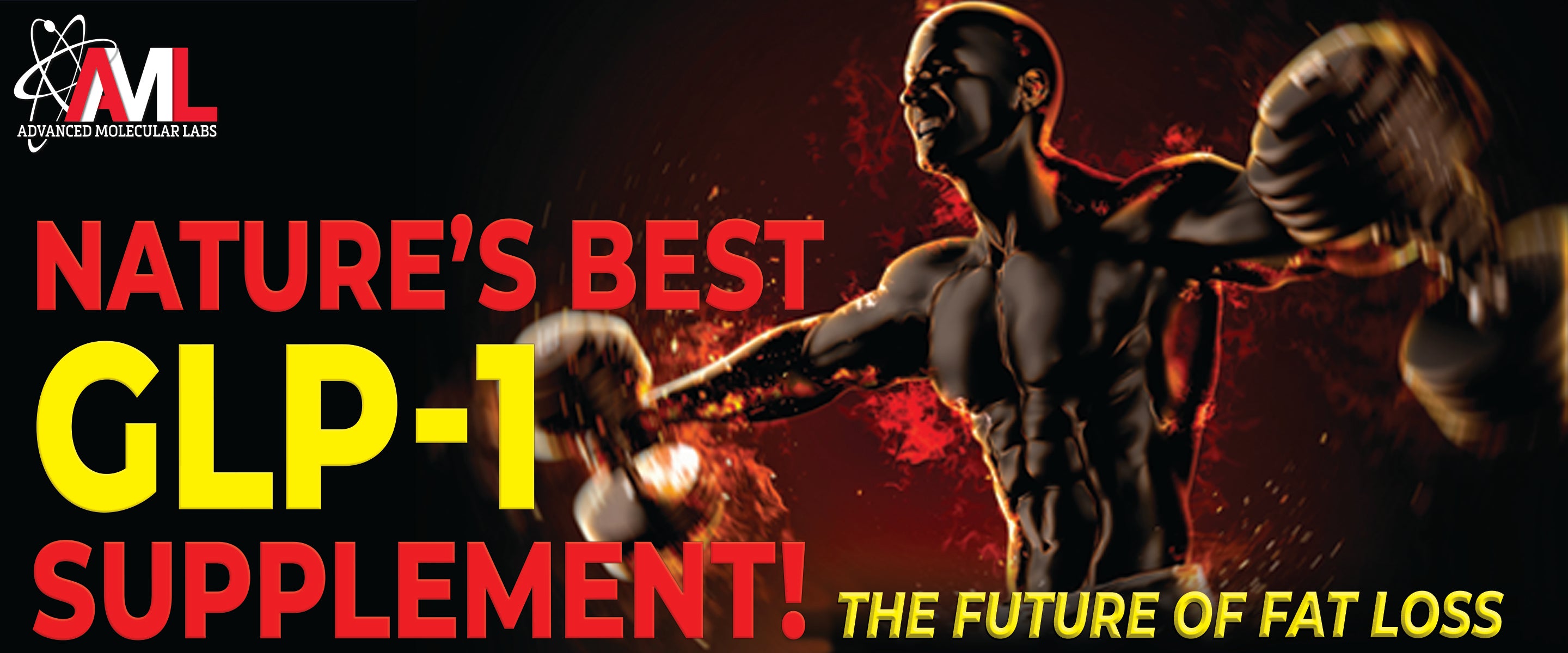


Ingredients to avoid in pre-workouts: New Dopamine Research
By Robert Schinetsky
We’ve covered dopamine extensively over the years, highlighting its importance not only in exercise and productivity, but also how it plays a role in fat burning and weight loss as well.
And, just when you think there wasn’t anything more to learn about dopamine, along comes a slew of new findings from the scientific community.
Today, we highlight some of the notable findings as we continue to understand the true powers off this mighty neurotransmitter.
Dopamine & Neurological Disease
Dopamine lies at the very heart of neurological disease, especially Parkinson’s disease where the cells that synthesize and secrete dopamine die. Researchers have noted that motor signs associated with Parkinson’s first appear when about 50% of substantia nigra die.[1]
Levodopa (L-DOPA) is the most commonly used and effective initial treatment for Parkinson disease.[2]
After prolonged use, however, the dose needed for effective treatment needs to be increased. This has led researchers to investigate other ways of increasing dopamine levels, such as by inhibiting the reuptake of dopamine via inhibition of the enzymes that degrade dopamine, such as monoamine oxidase-B (MAO-B) or catechol-o-methyltransferase (COMT).
Research published in JAMA Neurology researchers found that patient-rated quality of life was inferior when COMT inhibitors were used as adjuvant treatment compared with MAO-B inhibitors or dopamine agonists.[2]
In other words, this study found that dopamine agonists (nutrients that stimulate the release of dopamine) were more beneficial compared to adding an MAO-B inhibitor or COMT inhibitor to L-Dopa treatment in patients with motor complications of Parkinson’s Disease.
Other developments have also been observed in the area of Alzheimer’s disease.
The findings of a Phase II clinical trial published in Brain found that the re-purposing of a noradrenaline-reuptake inhibitor (atomoxetine) significantly reduced Tau and normalized cerebrospinal fluid protein biomarkers that are linked to synaptic function and brain metabolism.[3]
Furthermore, this is one of the first published clinical studies to show a significant effect on the protein Tau, which forms neurofibrillary “tau tangles” in the brain in Alzheimer's patients. More interesting is the finding that increasing norepinephrine helped lower inflammation.
The findings in this study echo the findings found in previously published animal research which noted that increasing norepinephrine levels had beneficial effects on cognition and pathology in Alzheimer's.
Treatment with the noradrenaline reuptake-inhibitor was also associated with significantly increased levels of BDNF (brain-derived neurotrophic factor) -- a protein in the brain that affects the growth, development, and maintenance of neurons.[3]
You might also find it interesting to learn that norepinephrine (as well as dopamine) affects executive functioning regulating cognition, motivation, and intellect, which also have an important role in social relationships, and (as a result) feelings of mood and well-being.[6,7] Moreover, two clinical studies have shown that L-tyrosine administration beneficially affects depression management, via dopamine and noradrenaline.[8,9]
Together these findings offer researchers another avenue through which they can address the development and progression of neurological disorders.
How Do Our Brains Produce Dopamine?
It’s common knowledge that dopamine is a chemical released to make you feel good. Most typically, it’s associated with feelings of reward, though it also affects mood, motivation, focus, memory, learning, and decision-making.
But, that doesn’t really discuss how it’s produced in the brain.
At a high level, dopamine is produced via a two-step process:
- L-Tyrosine is converted into L-Dopa
- L-Dopa is converted into Dopamine
Based on this, you might assume that the more tyrosine there is in the body, the more dopamine will be produced. This is true as precursors work as they supply the raw materials for l-dopa and dopamine synthesis but, only to a point…
As with everything, the human body is a fascinating entity that tightly regulates everything when left to its own devices -- even dopamine synthesis.
Newly published research, in the journal Nature Communications, gives new insight into how dopamine production is regulated by the brain.[4]
Tyrosine hydroxylase is the key enzyme involved in the regulation of dopamine synthesis (which is why AML Dopa Rush includes Vitamin C as it enhances tyrosine hydroxylase activity). FYI, vitamin C also quenches ROS, further enhancing dopamine synthesis.[5]
Previously, though, it wasn’t understood how this occurs at the structural level.
For starters, researchers learned that dopamine can regulate its own production by binding to the tyrosine hydroxylase enzyme and inactivating it. This is an example of “negative feedback,” and it serves as a way for the body to self-manage dopamine production when there has been enough produced.
When dopamine levels decline to a certain level, the assorted signaling pathways are activated via phosphorylation of tyrosine hydroxylase, causing dopamine to be released.
Dopamine, Memory & Forgetting
Having better memory and being less forgetful are two things we all wish we had.
But, would it surprise you to learn that actively forgetting is an important component of the brain?
Forgetting -- the ability to actively or passively forget or remove memory is essential for flexibility in the brain and “updating” our body’s software.
However, the act of forgetting, which is ubiquitous in some form or fashion to the entire human race, is not as well understood (or researched) as the act of learning.
Research conducted in fruit flies that was recently published in Nature finds that dopamine plays a role in forgetting.[10]
Previously, it was found that interfering stimuli impedes a subject's ability to recall. This temporary forgetfulness (aka “transient forgetting”) goes away when the interfering signal (e.g. the nagging significant other) goes away.
This new research represents a new foray into an area of cognitive function that was previously under-researched and poorly understood.
Flipping from one end of the spectrum to the other, another piece of new research highlights the role that dopamine’s offspring (noradrenaline) plays in helping us focus our attention.
As you’ve experienced for yourself, attention wanders during the day. Even this very second it might be drifting away from the words that you’re reading….
FOCUS!
Now that we’ve regained your attention…
The brain can get lazy at times, and, during this time, things can slip by your attention, causing you to not take notice or forget you ever saw or heard something entirely.
Say, for example, you’re walking around the neighborhood while listening to a podcast. In transit, you start to look at the sunset or hear a bird-call, your attention is diverted momentarily, and you likely won’t remember what was being discussed on the podcast.
However, someone screams on the podcast, and immediately you’re locked back in on what you’re listening to.
What causes your brain to re-focus again?
Yes, it was the loud voice barking at you through the headphones, but what happened at a physiological level.
The answer is rooted in the dopamine system of the body, more specifically norepinephrine.
You see, during these phases of inattentiveness, alpha waves in the brain (which are produced when you’re feeling relaxed or unfocused) rise.
When you’re required to focus (or re-focus if you’ve dazed off), a spike in noradrenaline helps right the ship and get you back on task.[11]
Takeaway
Dopamine is simply fascinating.
Not only is it responsible for feelings of well-being and reward, but dopamine also plays a role in memory, attention, and forgetting (and we’ve all had situations we'd rather not remember come morning time).
When it comes to enhancing dopamine support, there’s no better supplement on the market than AML Dopa Rush, which addresses dopamine support from multiple fronts.†
©Published by Advanced Research Media, Inc. 2022
©Reprinted with permission from Advanced Research Media, Inc.
† These statements have not been evaluated by the Food and Drug Administration.These statements are not intended to diagnose, treat, cure or prevent any disease.
References
- Cheng HC, Ulane CM, Burke RE. Clinical progression in Parkinson disease and the neurobiology of axons. Ann Neurol. 2010;67(6):715-725. doi:10.1002/ana.21995
- Richard Gray et al, Long-term Effectiveness of Adjuvant Treatment With Catechol-O-Methyltransferase or Monoamine Oxidase B Inhibitors Compared With Dopamine Agonists Among Patients With Parkinson Disease Uncontrolled by Levodopa Therapy, JAMA Neurology (2021). DOI: 10.1001/jamaneurol.2021.4736
- Allan I. Levey, Deqiang Qiu, Liping Zhao, William T. Hu, Duc M. Duong, Lenora Higginbotham, Eric B. Dammer, Nicholas T. Seyfried, Thomas S. Wingo, Chadwick M. Hales, Malú Gámez Tansey, David S. Goldstein, Anees Abrol, Vince D. Calhoun, Felicia C. Goldstein, Ihab Hajjar, Anne M. Fagan, Doug Galasko, Steven D. Edland, John Hanfelt, James J. Lah, David Weinshenker, A phase II study repurposing atomoxetine for neuroprotection in mild cognitive impairment, Brain, 2021;, awab452, https://doi.org/10.1093/brain/awab452
- María Teresa Bueno-Carrasco, Jorge Cuéllar, Marte I. Flydal, César Santiago, Trond-André Kråkenes, Rune Kleppe, José López-Blanco, Miguel Marcilla, Knut Teigen, Sara Alvira, Pablo Chacón, Aurora Martinez, José M. Valpuesta. Structural mechanism for tyrosine hydroxylase inhibition by dopamine and reactivation by Ser40 phosphorylation. Nature Communications, 2022; 13 (1) DOI: 10.1038/s41467-021-27657-y
- Bagga V, Dunnett SB, Fricker-Gates RA. Ascorbic acid increases the number of dopamine neurons in vitro and in transplants to the 6-OHDA-lesioned rat brain. Cell Transplant. 2008;17(7):763-73. doi: 10.3727/096368908786516774. PMID: 19044203.
- Moret C, Briley M. The importance of norepinephrine in depression. Neuropsychiatr Dis Treat. 2011;7(Suppl 1):9-13. doi:10.2147/NDT.S19619
- Kapur S, Mann JJ. Role of the dopaminergic system in depression. Biol Psychiatry. 1992 Jul 1;32(1):1-17. doi: 10.1016/0006-3223(92)90137-o. PMID: 1391289.
- McLean A, Rubinsztein JS, Robbins TW, et al. The effects of tyrosine depletion in normal healthy volunteers: implications for unipolar depression. Psychopharmacology (Berl) 2004;171:286–297.
- Goldberg IK. L-tyrosine in depression. Lancet. 1980;2:364–365.
- Sabandal JM, Berry JA, Davis RL. Dopamine-based mechanism for transient forgetting. Nature. 2021;591(7850):426-430. doi:10.1038/s41586-020-03154-y
- Noradrenaline surge helps disrupt alpha waves in the brain, helping it to focus[Martin J. Dahl, Mara Mather, Markus Werkle-Bergner. Noradrenergic modulation of rhythmic neural activity shapes selective attention. Trends in Cognitive Sciences, 2022; 26 (1): 38 DOI:1016/j.tics.2021.10.009







